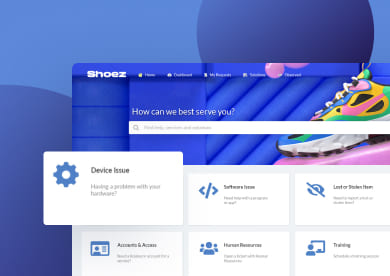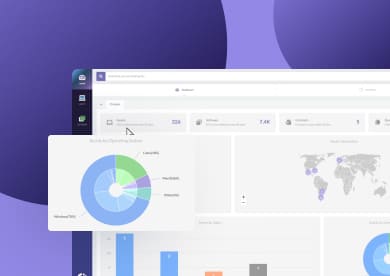IT teams often struggle with service requests that pile up without a good system. This leads to delays and frustrated users. Request Management software helps teams process and track service requests in an organized way.
The stakes for getting this right are high. Studies show that 80% of users measure their satisfaction with IT services through one thing: speed of resolution. This means your choice of request management tool directly impacts user confidence in your IT department and your team's reputation.
To help you make an informed decision, this article breaks down six well-known service request management software.
Request Management software explained (in IT support)
IT teams receive a constant stream of service requests — ranging from software installations to access permissions and IT training enrollments. Service Request Management provides a defined process to handle them efficiently.
Request management software focuses on handling routine, expected needs from users. Think access requests, software installations, equipment requests, or account changes. In an IT support context, it provides a structured way to collect, approve, fulfill, and track those requests without mixing them up with outages or urgent issues.
Most tools rely on request forms, predefined workflows, and clear ownership. That structure helps IT teams keep work predictable and measurable, while users know where to go and what to expect when they ask for something.
What is Request Management software?
Request Management software is a system designed to manage service requests from start to finish. Users submit a request through a portal or form, the tool routes it through approvals if needed, and IT completes the task following a defined process.
The value comes from standardization. Instead of handling requests through emails or chat messages, teams use templates that capture the right information upfront. A “new laptop” request, for example, can automatically ask for role, manager approval, and delivery date, then route the task to procurement or IT.
Over time, the software also builds visibility. Teams can see request volumes, fulfillment times, and bottlenecks, which helps refine processes and set realistic expectations with the business.
Request Management vs Incident Management: what’s the difference?
The main difference lies in intent and urgency. Request Management deals with planned, non-urgent needs. The service is working, and the user is asking for something new or a change to an existing setup. Examples include access to a system, a password reset, or a software license.
Incident Management handles unplanned interruptions. Something is broken, degraded, or not working as expected, and the priority is to restore service as quickly as possible. A VPN outage or an email system failure falls into this category.
In practice, both often live in the same IT support platform. Separating them still matters because each follows a different flow, uses different priorities, and is measured in different ways. Clear boundaries help teams respond faster to real issues while keeping everyday requests organized and under control.

How to choose Request Management software
Choosing Request Management software comes down to how well it supports everyday work in IT support, not how long the feature list looks.
The right tool should make requests easier to submit, simpler to fulfill, and easier to track over time. Paying attention to how teams actually use requests helps narrow the help desk options quickly.
Core capabilities checklist
A solid Request Management tool covers more than a basic intake form. Look for capabilities that support the full lifecycle of a request and reduce manual effort along the way:
- Self-service portal: A clear entry point where users can find services, submit requests, and check status without contacting support directly.
- Custom request forms: Forms that adapt to the request type and collect the right details upfront, reducing back-and-forth with users.
- Approval workflows: Configurable approval steps based on role, cost, or request type, with clear visibility into who needs to act next.
- Service catalog: A structured list of available services that sets expectations around scope, ownership, and delivery time.
- SLAs and fulfillment targets: Time-based commitments that help teams prioritize work and report on performance consistently.
- Task routing and assignment: Automatic assignment to the right team or technician based on rules, categories, or workload.
- Integration with asset and user data: Context around users, devices, and licenses, which helps speed up fulfillment and avoid errors.
- Notifications and status updates: Automatic updates that keep users informed without requiring manual follow-ups.
- Reporting and analytics: Visibility into request volume, fulfillment time, backlog, and trends over time, useful for capacity planning and process improvements.
Most request management tools don’t live on their own. In practice, they’re usually part of a help desk or ticketing system that IT teams already use to manage daily support work. Those systems provide the basic structure: a central place where all requests and issues are logged, tracked, and assigned. Request Management builds on that foundation by adding more structure to planned, repeatable work.
That connection matters because requests rarely exist in isolation. A software request might turn into an incident if something fails during installation, or highlight a recurring issue tied to licensing or configuration.
For that reason, Request Management is part of a broader IT Service Management platform. Keeping requests, incidents, and changes in one place reduces duplicate work, improves visibility, and gives users a single, consistent way to interact with IT.
Common request types
Understanding the types of requests you handle most often helps determine how flexible the software needs to be. In IT support, common request categories include:
- Access and permissions. Requests for system access, role changes, or additional privileges.
- Software and licensing. Installation requests, license assignments, or access to SaaS tools.
- Hardware and equipment. New devices, replacements, peripherals, or upgrades.
- Account and user changes. New hires, role changes, and offboarding-related requests.
- Password and authentication help. Resets, multi-factor authentication setup, or account unlocks.
- General service requests. One-off tasks that don’t fit a strict category but still follow a defined process.
6 Request Management software rools compared
Methodology
Before we get started, a quick note: InvGate builds and offers IT Service Management and IT Asset Management solutions, making us an active player in this market.
Some vendors in this article are our competitors. Even so, we aim to deliver accurate, honest, and practical information that helps you make the best decision.
Our evaluations draw from publicly available sources — vendor websites, product documentation, user reviews on platforms like Gartner Peer Insights, G2, and Capterra, analyst reports, and hands-on testing or demos when available. We assess each solution based on functionality, pricing (where made public), integrations, user experience, and support quality.
The information here is accurate as of December 2025. We'll review this content regularly to stay current with product updates and market developments.
Comparison table + short summaries
| Hosting | Free trial | Price | |
| InvGate Service Management | Cloud / on-premise | Yes (30 days) | Starting at $17/agent/month |
| ManageEngine ServiceDesk Plus |
Cloud / on-premise | Yes (30 days) | Starting at $13/agent/motn |
| Freshservice | Cloud | Yes (21 days) | Starting at $19/agent/month |
| SysAid | Cloud / on-premise | No | Custom quote |
| Jira Service Management | Cloud | Yes (7 days) | Starting at ~$19/agent/month (25 agents) |
| TOPdesk | Cloud / on-premise | Yes (30 days) | Custom quote |
TL;DR: best Service Request Management tools
Click on the link to the tools to jump to more details.
-
InvGate Service Management – Offers flexible workflows and is trusted by major enterprises like NASA and KPMG; strong mix of usability and ITIL alignment.
-
ManageEngine ServiceDesk Plus – Feature-rich option that integrates easily with other IT monitoring tools; good for mid-sized IT teams.
-
Freshservice – Cloud-based tool with fast setup and automation; popular for internal IT and non-technical teams alike.
-
SysAid – Known for its automation and customization options; used by IT departments looking to streamline repetitive tasks.
-
Jira Service Management – Designed for technical teams and dev-support collaboration; integrates deeply with Atlassian tools.
-
TOPdesk – Popular with public sector and education environments; supports shared services across departments.
1. InvGate Service Management

InvGate Service Management is a service desk platform designed to manage service requests, incidents, changes, and workflows in IT and business departments.
Built to support ITIL practices, it offers visual workflows, customizable request forms, and automation rules. It's used by organizations like KPMG, NASA, PwC, Motorola, Allianz, and Arcos Dorados. Available in both cloud and on-premise versions, it can integrate with third-party tools via API or prebuilt connectors.
InvGate Service Management features
- A user-friendly self-service portal for employees to submit and track requests with minimal IT assistance.
- Customizable workflows and templates to handle various request types efficiently.
- Full integration with Incident, Problem, and Change Management, enabling a holistic ITSM approach. We’re also ITIL-certified in these practices, so you’ll be following industry best practices.
- SLA enforcement and performance tracking to maintain service quality and accountability.
Unlike standalone Request Management tools, InvGate Service Management is a comprehensive ITSM suite, making IT Service Management more cohesive and efficient.
InvGate Service Management pricing details
Pricing is quote-based and depends on deployment, number of agents, and modules required. Both monthly and annual billing are available.
InvGate Service Management user reviews and ratings
Users often highlight its ease of use, support responsiveness, and performance tracking.
- Gartner Peer Reviews score: 4.8
- G2 score: 4.6
2. ManageEngine ServiceDesk Plus
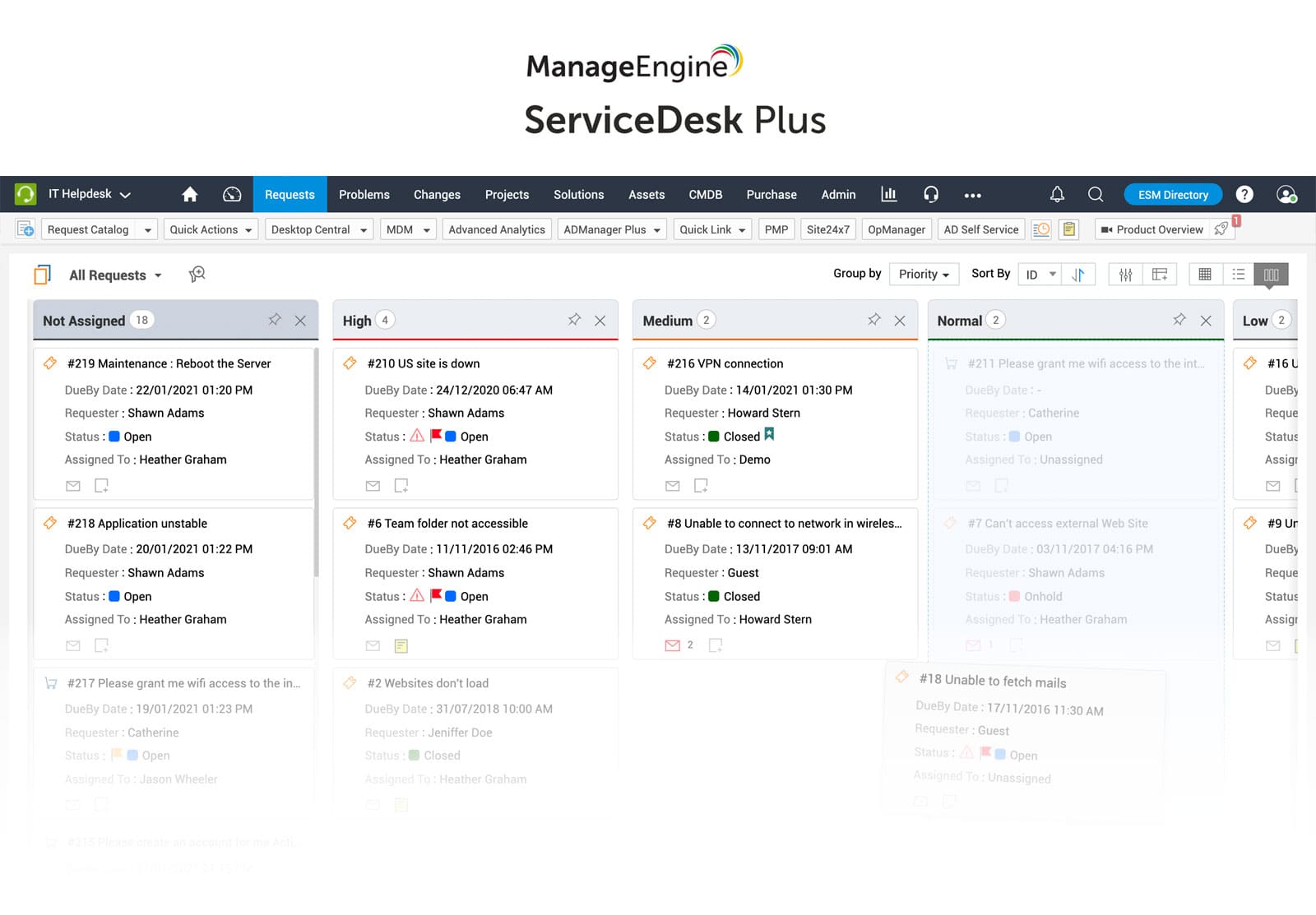
Developed by Zoho Corporation, ManageEngine® ServiceDesk Plus is part of a broader suite of IT management tools. It supports ITSM practices with modules for request, incident, problem, and Change Management. It's available on cloud and on-premise deployments and integrates with other Zoho apps and monitoring tools.
ManageEngine ServiceDesk Plus features
These are some of the platform's main features based on information from their official product page (accessed December 2025).
- Ticket automation and categorization.
- Built-in asset and project management.
- Self-service portal with knowledge base.
- Multi-language support.
ManageEngine ServiceDesk Plus pricing details
Cloud pricing tiers:
- Standard: Starts from $13 / technician / month
- Professional: Starts from $27 / technician / month
- Enterprise: Starts from $67 / technician / month
- Checked on: December 2025 (US), official website.
ManageEngine ServiceDesk Plus user reviews and ratings
- Gartner Peer Insights score: 4.4
- G2 score: 4.2
3. Freshservice
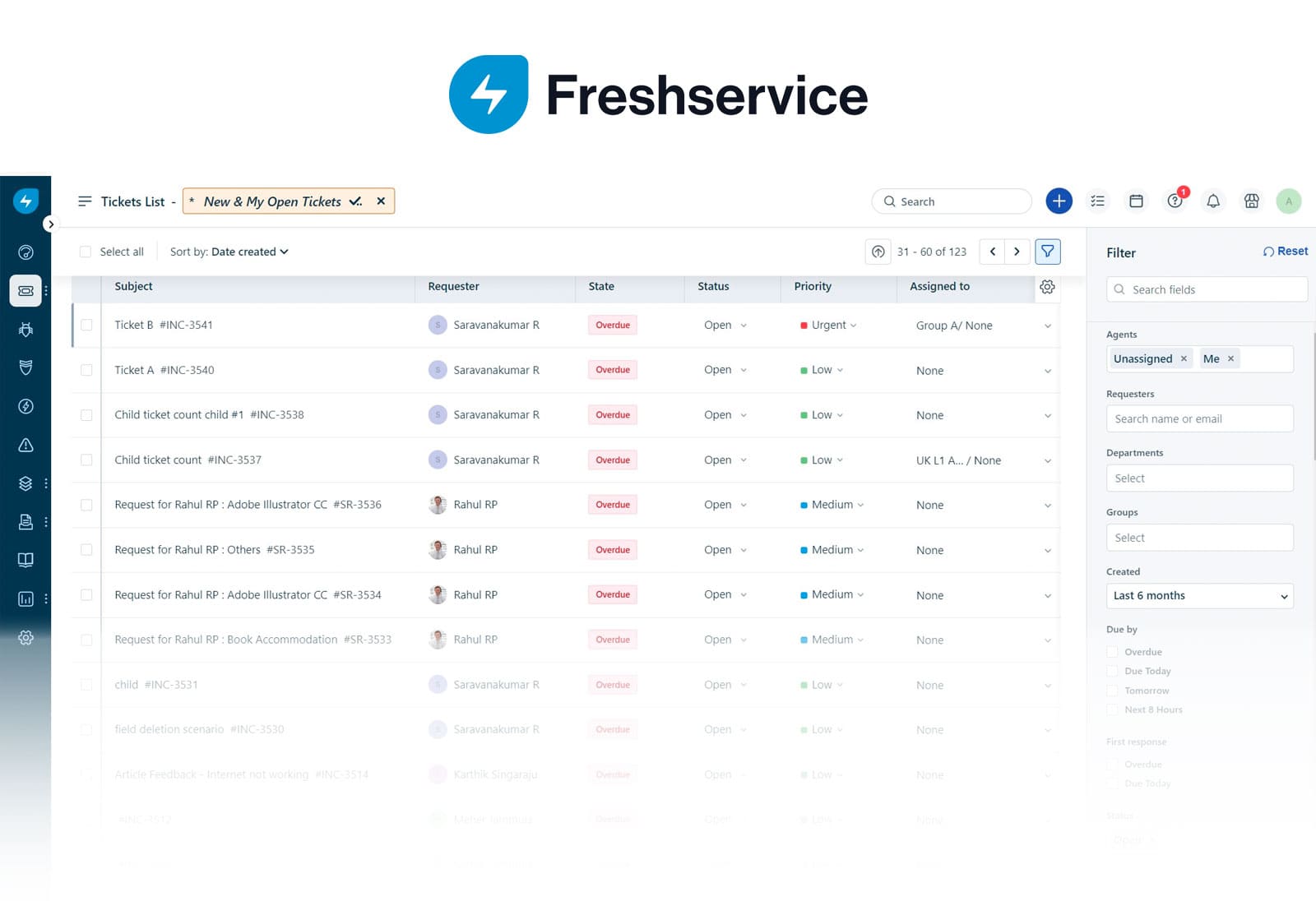
Freshservice® is a cloud-based service desk from Freshworks that caters to IT and business teams. It includes incident, problem, change, and request management, plus workflow automation. It integrates with other Freshworks tools and popular third-party platforms like Microsoft 365, Slack, and Google Workspace.
Freshservice features
Part of the platform’s offering, according to their product page (accessed December 2025):
- Omnichannel support.
- Visual workflow automation.
- Mobile app.
- AI-powered ticket suggestions.
- Service catalog and change calendar.
Freshservice pricing details
The prices with annual billing as follows:
- Starter: $19 per agent, per month.
- Growth: $49 per agent, per month.
- Pro: $99 per agent, per month.
- Checked on December 2025 (US) official website.
Freshservice user reviews and ratings
- Gartner Peer Insights score: 4.2
- G2 score: 4.6
4. SysAid

SysAid® is an IT Service Management platform focused on automation and internal service delivery. It includes request tracking, IT Asset Management, and automation rules to reduce repetitive tasks. It's available in cloud and on-premise versions and supports integrations through REST APIs and native connectors.
SysAid features
These are some of the functionalities listed on provider’s site (accessed December 2025).
- Ticket automation and routing.
- Self-service portal with knowledge base.
- Asset Management integration.
- Custom workflow automation engine.
- AI agents for task automation.
SysAid pricing details
Pricing is quote-based and varies by deployment, agents, and modules selected. Specific details are available upon request.
SysAid user reviews and ratings
- Gartner Peer Insights score: 4.6
- G2 score: 4.5
5. Jira Service Management

Created by Atlassian, Jira Service Management® is built for technical and development teams but also supports broader business functions. It connects seamlessly with Jira Software and Confluence, allowing for tight collaboration between support and dev teams. Available only as a cloud solution.
Jira Service Management features
These are some of its features according to the official features page (accessed November 2025).
- Request queues with SLA tracking.
- Built-in Change Management.
- Confluence knowledge base integration.
- Automation rules and approval workflows.
- Incident Management (linked with DevOps).
Jira Service Management pricing details
- Free: Free for up to three agents.
- Standard: $19 per agent, per month.
- Premium: $48 per agent, per month.
Starting with 201 agents, you can contact the sales team to access the quote for the Enterprise plan. - Checked on: December 2025 (US), official web.
Jira Service Management user reviews and ratings
- Gartner Peer Insights score: 4.4
- G2 score: 4.3
6. TOPdesk

TOPdesk® is a Service Management tool that originated in the Netherlands and serves educational institutions, government, and mid-sized enterprises. It supports incident, request, and Change Management, and offers both SaaS and on-premise deployment.
TOPdesk features.
Part of the platform’s offering, according to their official product information (accessed December 2025)
- Incident and Request Management.
- Branded self-service portal and FAQ.
- Workflow automation with pre-built connectors.
- Multi-department support.
- AI assistance: Suggested solutions, field values, related KB content and tickets, and more.
TOPdesk pricing details
Quote-based, depending on modules and users. Free trial available.
TOPdesk user reviews and ratings
- Gartner Peer Insights score: 4.6
- G2 score: 4.4
Disclaimer: All product names, logos, and brands are property of their respective owners. All company, product, and service names used on this site are for identification purposes only. Use of these names, trademarks, and brands does not imply endorsement. Comparisons are based on publicly available information as of November, 2025 and are provided for informational purposes only.
Implementation and success metrics
Implementing request management software is less about a single launch moment and more about how the practice settles into daily support work. Teams usually move through a few recognizable phases, each one shaping how requests are submitted, handled, and measured. Knowing what to expect helps set realistic expectations and avoids forcing structure too early or too late.
Over time, success shows up in consistency: fewer clarifying emails, clearer ownership, and better visibility into where work slows down. Metrics then help confirm what’s working and where adjustments make sense.
Rollout steps
Most implementations follow a similar progression, even if the pace varies by organization:
-
Intake
Start by defining how requests enter the system. That often means replacing emails or chats with a single entry point, usually a portal or request form. Early on, the goal is clarity, not perfection. Collect enough information to act without overwhelming users. -
Service catalog
Once intake stabilizes, teams usually formalize common requests into a catalog. Each entry describes what the service is, who can request it, and what delivery looks like. A well-scoped catalog reduces confusion and sets expectations before work begins. -
Approvals
Approval steps come next, especially for access, purchases, or changes with cost or risk attached. At this stage, teams refine who needs to approve what and remove unnecessary steps that slow things down. -
Automation
With repeatable patterns in place, automation starts to make sense. Tasks can route automatically, approvals can trigger fulfillment steps, and notifications can replace manual updates. Automation works best after the process is understood, not before. -
Continuous improvement
Request data highlights friction points. Teams revisit forms, workflows, and catalog entries based on volume, delays, or user feedback. Small adjustments over time tend to have a bigger impact than large redesigns.
Each step builds on the previous one. Skipping ahead usually creates rework later, especially when automation or reporting is introduced too early.
What KPIs should you track?
- Request volume by type. Shows demand patterns and helps identify which services should be standardized or automated next.
- Average fulfillment time. Measures how long requests take from submission to completion, broken down by request category.
- SLA compliance rate. Indicates how often teams meet their stated fulfillment targets.
- Backlog and aging requests. Reveals bottlenecks and workload imbalance across teams.
- First-time completion rate. Tracks how often requests move forward without needing additional information, which reflects form quality and clarity.
Together, these KPIs tell a practical story: where requests slow down, which services consume the most effort, and how predictable fulfillment has become. Over time, they also support better planning and clearer conversations with the business.
Free service request templates
Do you want to get started with Request Management? We’ve built predefined templates to streamline request submission and processing.
Instead of figuring out what steps to include, you can use these templates to get started right away.
- Software request: Employees often need new software, but without a standardized process, IT teams might receive incomplete requests or spend time chasing approvals.

- Training request: For employees to request courses or certifications, get approval from managers or HR and track enrollments.
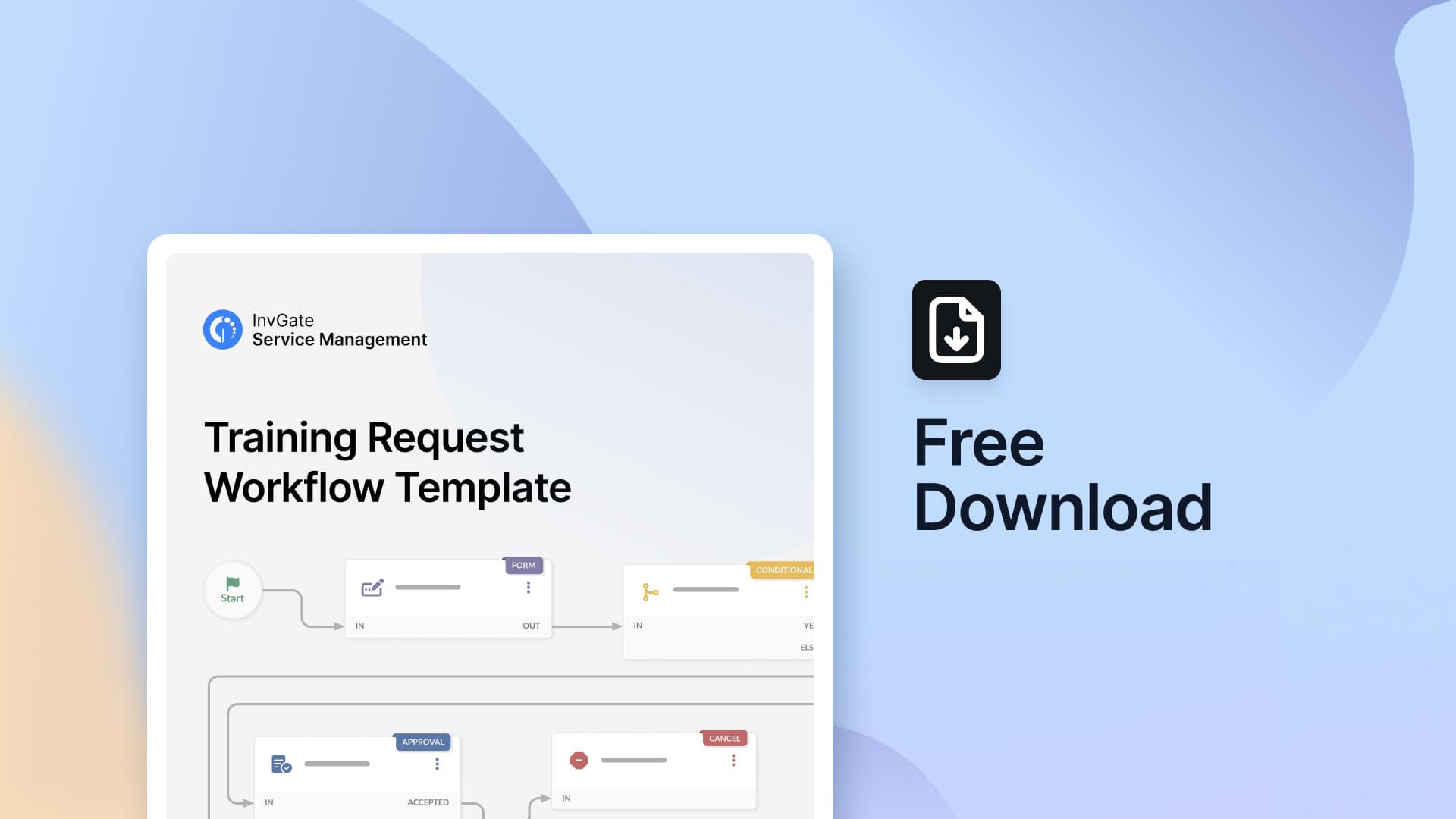
- Change request: It captures all relevant change details and standardizes the risk assessment and approval process.
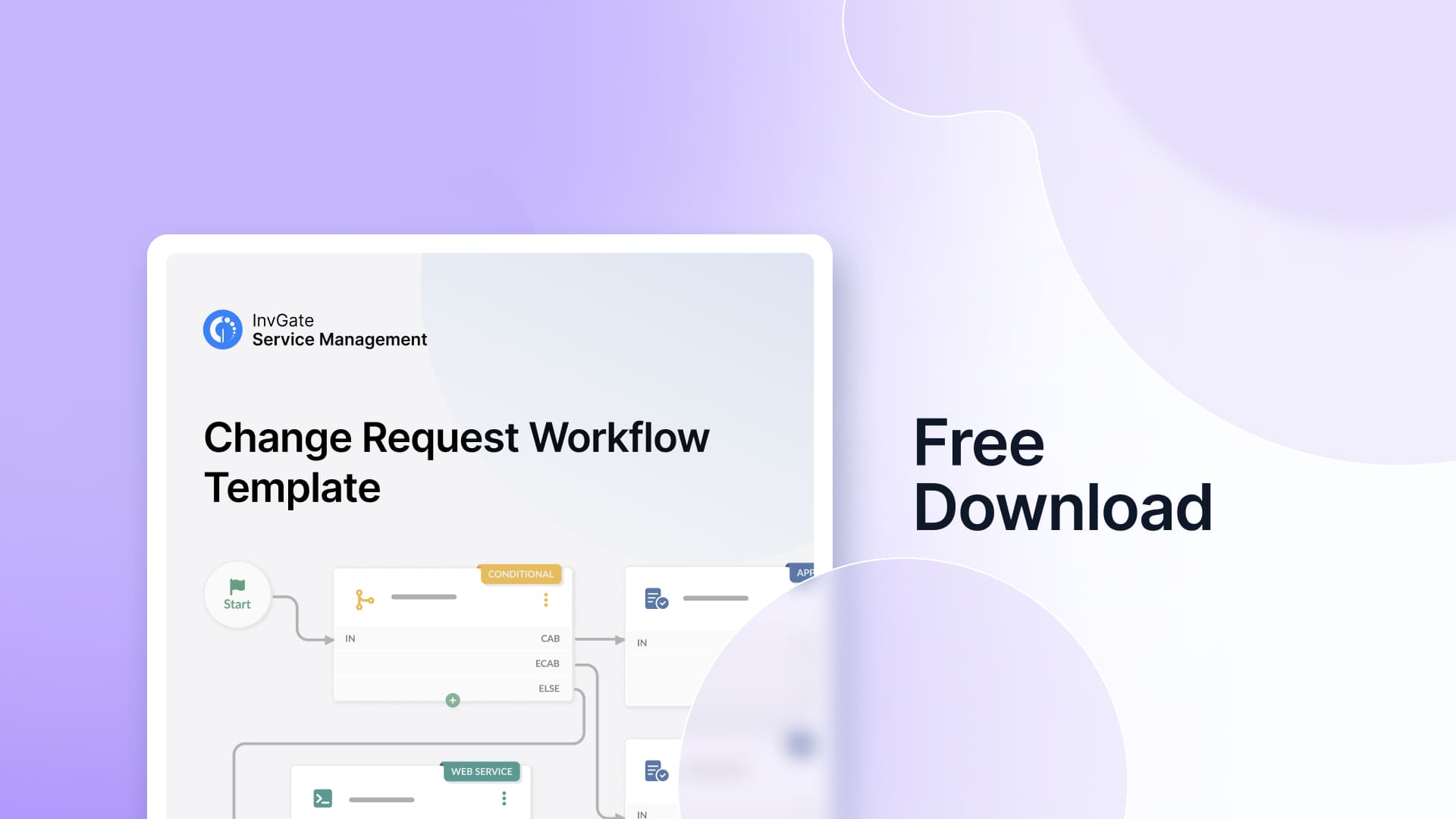
With these templates, you can reduce back-and-forth communication, provide audit trails and transparency, and ensure requests are handled consistently.
Final words
Request Management software is essential for efficient IT service delivery. A structured system helps IT teams manage requests effectively by automating workflows, reducing delays, and improving user satisfaction.
InvGate Service Management is a complete ITSM platform that includes Request Management. Are you looking to optimize your IT services? Claim your 30-day free trial and start today.
